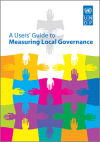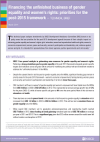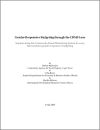FOUND 24
This Guide was preared by Alexandra Wilde, Shipra Narang, Marie Laberge and Luisa Moretto UNDP Oslo, 2009.
Paper discussing the definition and measurement of Sustainable Development Goal (SDG) Indicator 5.c.1. (reclassified to Tier II) and comparing Indicator 5.c.1 with other SDG fiscal indicators.
This note provides an overview of existing gender equality markers and reviews issues relating to the tracking and monitoring of investments related to gender equality and women’s empowerment.
This technical paper analyses investments by OECD Development Assistance Committee (DAC) donors in six policy areas that are priorities for the post-2015 development agenda because of their catalytic impact on achieving gender equality and women’s rights: girls’ education; sexual and reproductive he
The guidance note sets out commom principles and standards for gender equality markers systems that track and report on allocations and expenditures for gender equality and women's empowerment.
This manual published by United Nations Human Settlements Programme (UN-HABITAT) in 2008 is designed to assist training institutions in mainstreaming gender concerns in local government capacity-building and in training related to human settlements as conducted by Habitat Agenda partners.The Sourceb
The sourcebook for Trainers was published by the United Nations Human Settlements Programme (UN-HABITAT) - 2008.
This resource pack authored by Debbie Budlender provides relevant knowledge to facilitate mainstreaming gender-responsive approaches into reproductive health programmes, and the inclusion of specific aspects of gender inequality and disadvantage into national policy frameworks.
The paper suggests how the Community-Based Monitoring System (CBMS), developed and implemented in 14 countries over the last ten years with financial support from the Canadian International Development Research Centre (IDRC), can be used to facilitate gender-responsive budgeting (GRB) at the local l
The Health Rights of Women Assessment Instrument (HeRWAI) is a tool developed by the Humanist Committee on Human Rights (HOM) in 2006 to enhance lobbying activities for better implementation of women's health rights.






